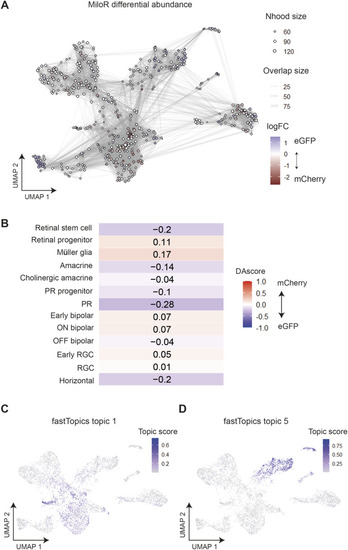Figure S6.
- ID
- ZDB-FIG-230916-126
- Publication
- Uttley et al., 2023 - Unique activities of two overlapping PAX6 retinal enhancers
- Other Figures
- All Figure Page
- Back to All Figure Page
|
Differential abundance analysis and topic modelling validates the assignment of enhancer-active cell types. |

